
From an outsider’s perspective — that is to say, an American who’s never traveled through Europe — Greece is known for its picturesque white sandy beaches with crystal-clear waters that line the thousands of miles of coastline. An eclectic mix of dome- and cave-style houses line the mountainsides, painted white and blue after the country’s flag. Pictures flood the internet with breathtaking views spanning all times of day of any season.
These scenes, however, only offer a partial view of Greece and portray a myth AJ Ginnis is trying to dispel. Because if a uniformed traveler drives away from the coastline, say an hour-and-a-half northwest of the capital, Athens, those beautiful beaches transform into a mountainous region with tops reaching 2,000 meters that house more than 20 ski resorts.
It's in those mountains where Ginnis learned to ski. Led by his father, who ran a ski resort and doubled as a ski instructor, and his mother, an avid skier in her own right, Ginnis would chase his family up and down the powdery mountains every winter.
Nearing 30, Ginnis is repping his country as a promising alpine skier, wanting to prove that Greece is more than beautiful beaches. He’s out to prove that someone who is a Greek skier can compete with the world’s best.
Alpine skiing, Ginnis tells me, “is arguably the dumbest sport on the planet. It’s basically — it’s like a poor man’s Formula One.
“It’s probably the second most popular winter sport in the Olympics after ice hockey. And it’s one of those sports you have to be born into; you can’t pick it up at school with your buddies.”
Oddly enough, skiing with his buddies is exactly where Ginnis fell in love with alpine racing.
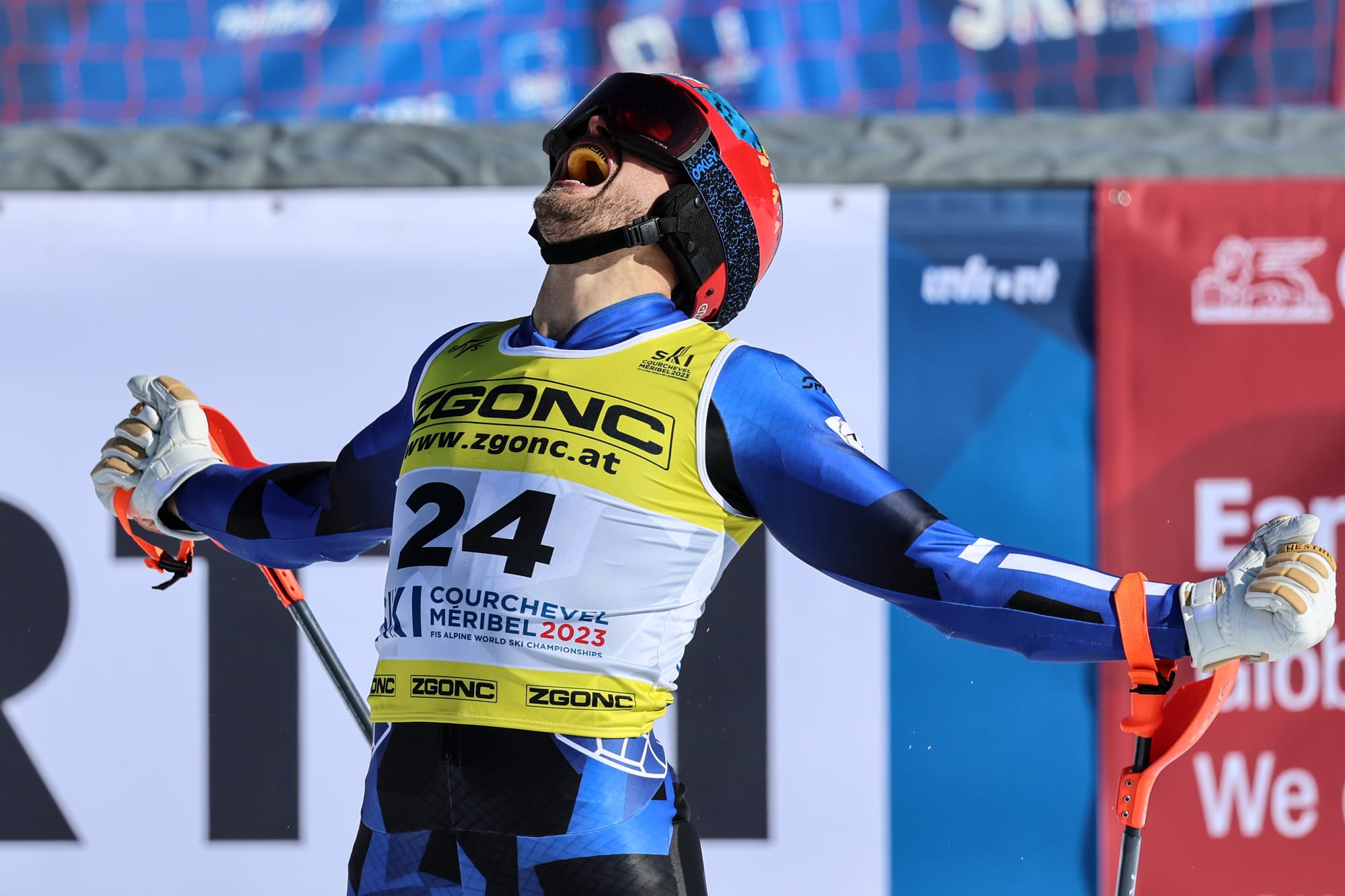
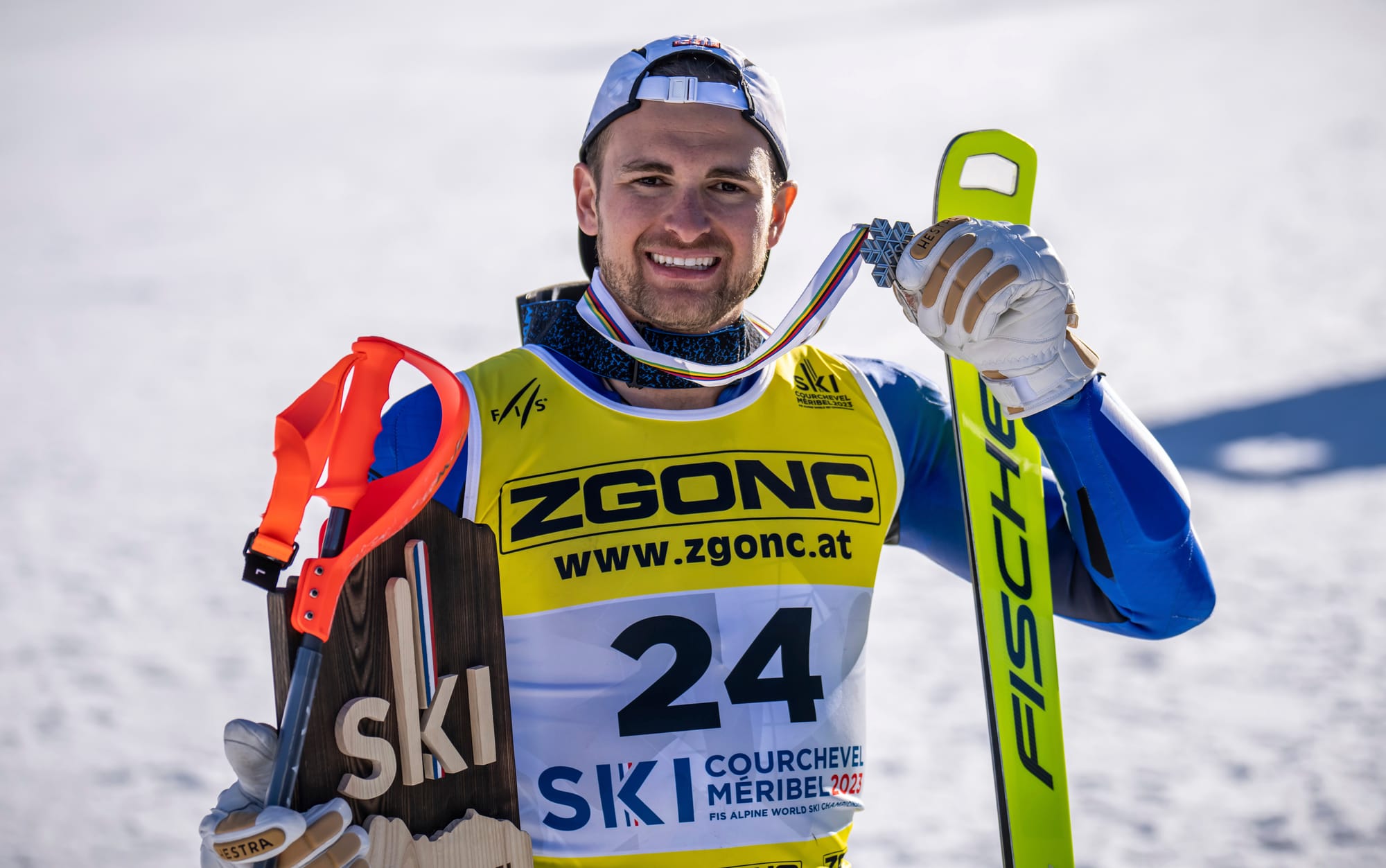
A bronze at World Championships was a defining moment in AJ Ginnis's journey. [AP photos]
He was 12, accompanying his father for winters in Austria and skiing every day in school. It was his mother’s idea. His younger brother would stay behind with her. At the same time, Ginnis went to a new country and learned a new language and immersed himself in the culture — basically using it as “a learning tool for AJ to become more international,” he says.
Imagine being 12 years old, living in a new world with no friends and skiing with kids who have hit the slopes since they were five years old. Unlike Greece, skiing is ingrained in Austrian culture. Forty-thousand-plus people pack stadiums for races. Alpine skiing plays on every TV in every pub. Kids grow up in school, spending afternoons on the slopes. Sure, Ginnis had put in his time on the mountains, but nothing like this.
He routinely finished last in practice against his Austrian teammates. He was fast but also wild, flying down the mountain, known for taking risks and big crashes at 50 or 60 miles per hour. He’s cracked helmets. Broken bones. Blown out his knees — multiple times. He’s had his racing suit burn into his skin. (He’s since learned more technique and control.) Through it all, he learned, “If I put in the hard work, I’ll see the payoff. I really got hooked on that.”
So while he first entered Austria as a boy angry at his parents for shipping him away from home, he left that first winter a vastly improved skier who found his passion. When asked if he wanted to go back with his father next winter, there was no doubt: “Absolutely.”
What Ginnis loves most about skiing is the way people express themselves on a mountain. There are the risk-takers who push their bodies and skis to the limit. There are the technicians who are more graceful and ski using their smarts. Ginnis says skiing is a lot like shooting a free throw: the fundamentals are the same, but everyone has a different shot. Think Shaquille O’Neal vs. Steve Nash.
After four winters in Austria, his mother decided it was time to move to the United States. He would take his skiing talents to get a full ride to an American university. They settled in Vermont, where Ginnis attended Green Mountain Valley School, a college prep school that doubles as a ski academy. It was all a huge culture shock for the 17-year-old. He had settled into his annual routine of splitting time between Greece and Austria. Summers meant those picturesque Greece beaches with his buddies playing volleyball or basketball or running track. Winters meant four months of dedicating himself to the slopes.
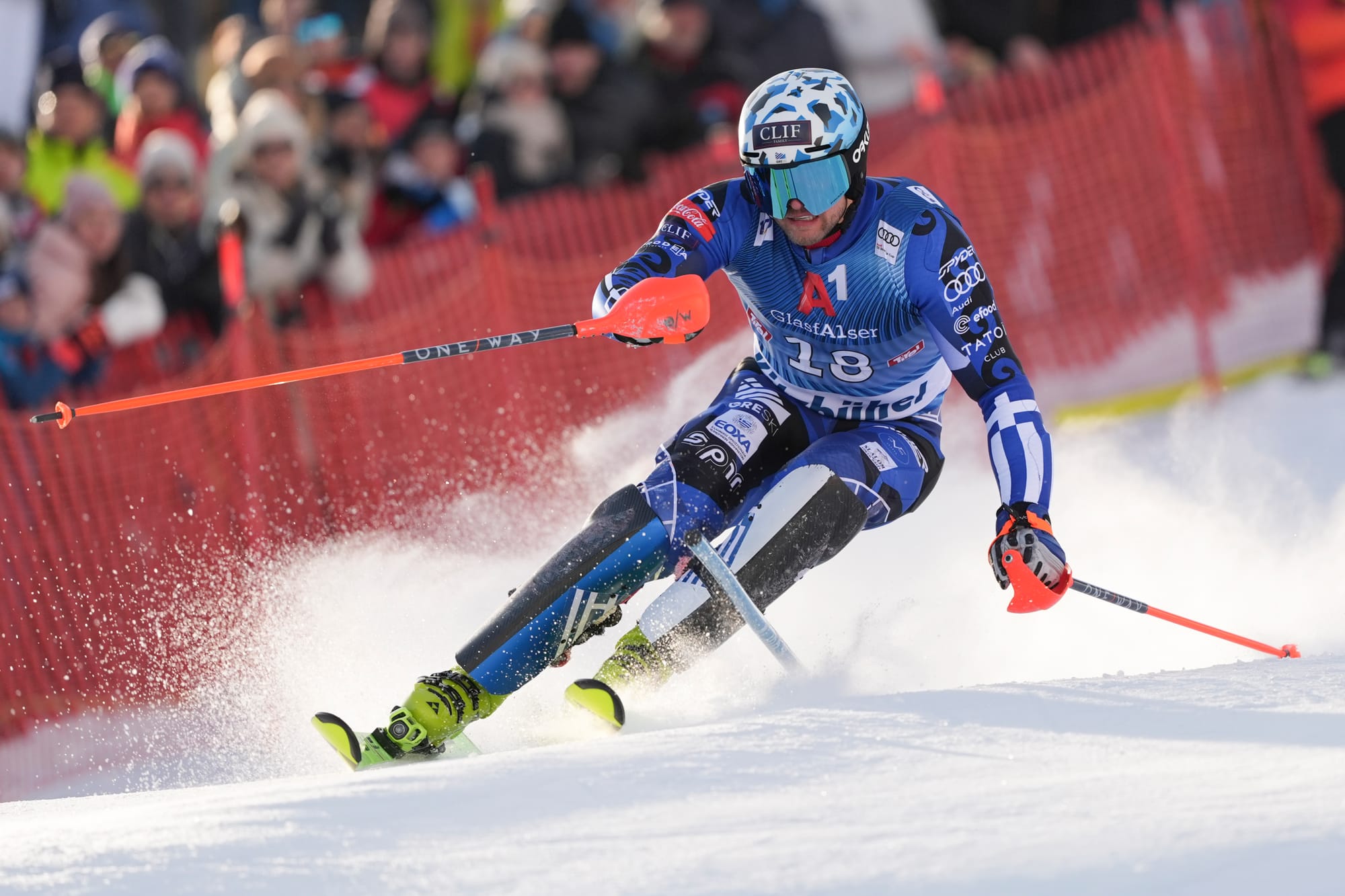
But now he found himself in America, a kid once again lost in a whole new world with no friends, a strange accent, and where skiing hardly registers on the national radar. But he was talented. Boy, was he talented.
He was accepted into Dartmouth College in New Hampshire, which holds claim to the oldest collegiate ski team in the country and multiple Olympians. Dartmouth, though, would have to wait. Because of his talents and dual citizenship, the U.S. Ski Team offered him a spot with its development team — a program dedicated to improving the skills of athletes 21 and younger who could one day make the national team.
With it came the full Team USA uniform and all its notoriety and history.
“You’re living on Cloud Nine,” he says. “I’m with the big boys.”
Ginnis immersed himself in the team’s culture. He learned about proper training and cardio, the importance of carbs and proteins in his diet, recovery rides and dealing with lactic acid in his muscles. He watched the techniques of the team’s best skiers, who were technically sound and “didn’t want to kill themselves going off the jump.”
At this point, Ginnis was still a member of the latter group: a risk taker flying down the mountain at breakneck speeds, which often led to big blowouts. One such crash cost him his season just months after joining Team USA. He shredded his ACL and suffered meniscus and cartilage damage. A surgeon repaired what he could, but it would be a long road back to the slopes.

It didn’t help, either, that he was 17 and thought he knew it all. Rehab? Who needs that? Why work on his range of motion when his knee had always been able to bend and fully extend? Why squat? Why all these ridiculous exercises? For good reason, it turns out. He never fully recovered from that injury.
Ginnis’ time with Team USA was a mix of recovering from five knee surgeries and flashing his talent: he won bronze at the 2015 World Junior Alpine Skiing Championships and qualified for Team USA at the 2017 World Championships.
But after six years with Team USA, the team cut its slalom program, leaving Ginnis and four others without a home. If he was going to make a career skiing, he was going to have to do so independently.
Slalom skiing is one of six disciplines of alpine skiing, and the one where Ginnis excels. It features up to 75 gates placed closely together, forcing racers into short, quick turns. When Team USA cut its program in 2018, Ginnis felt lost and as if he’d been wronged.
“I thought it was pretty unfair. I didn’t have a place to go,” he says.
Shortly after, he destroyed his knee — again — at a race in New Zealand. Doctors told him there was a 50-50 chance he may never ski again. If there’s one thing Ginnis’ parents taught him, it’s perseverance. His mom often told him that if he ever wanted to quit, he should do so on his own terms. Calling it a career because of an injury certainly didn’t feel like it met that criteria.
Then came a lifeline.
He spoke to a coach back in Greece who welcomed him with an opportunity to ski with the Greek flag next to his name. There was one — big — caveat, though. The team didn’t have any money to support him, so he would have to fund his own team, pay his own coaches, and travel on his own dime. It was a no-brainer if he could raise the money. He reached out to his sponsors, secured $100,000, and hired his recently retired best friend, Sandy Vietz, as his do-it-all coach.
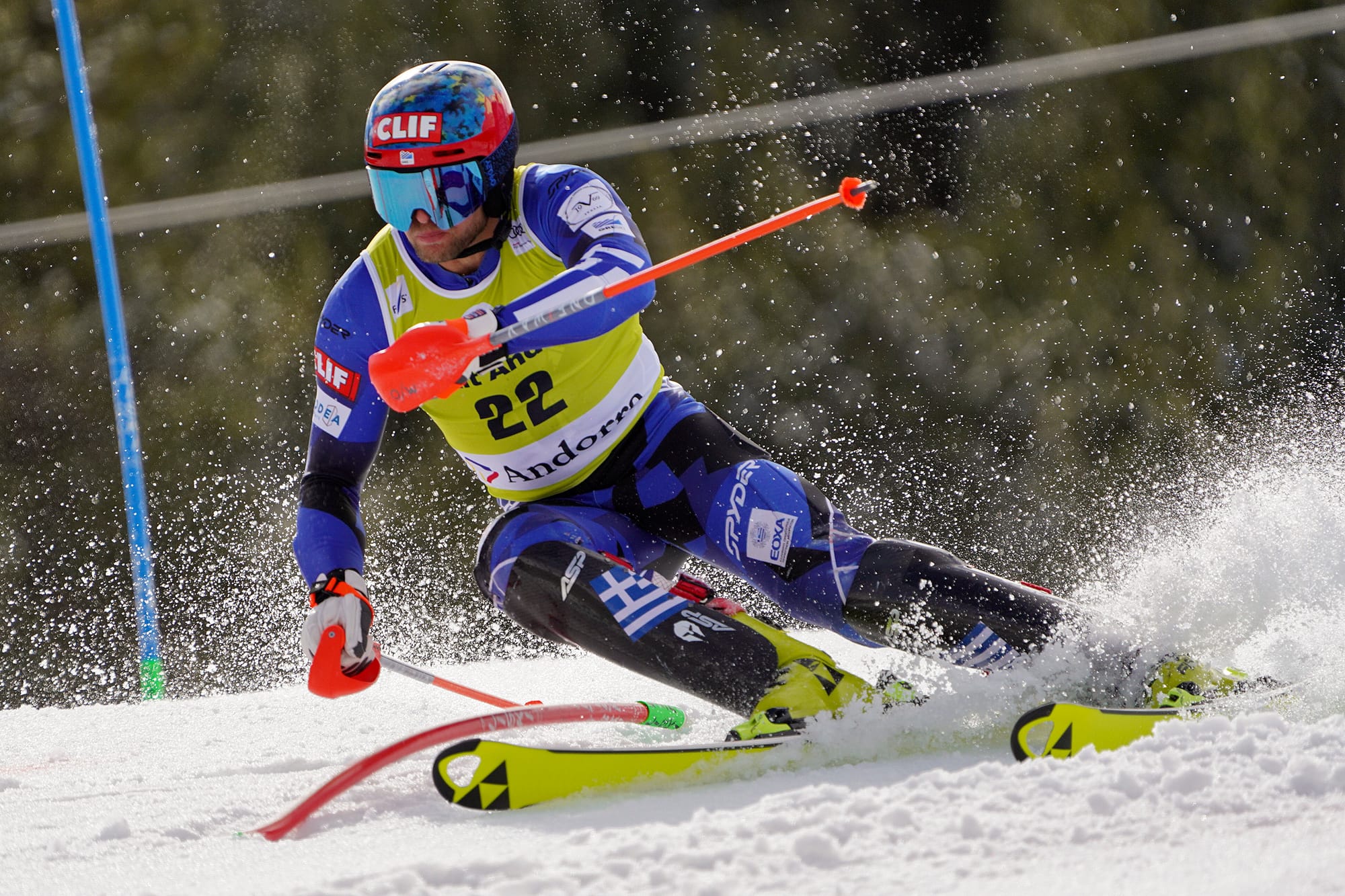
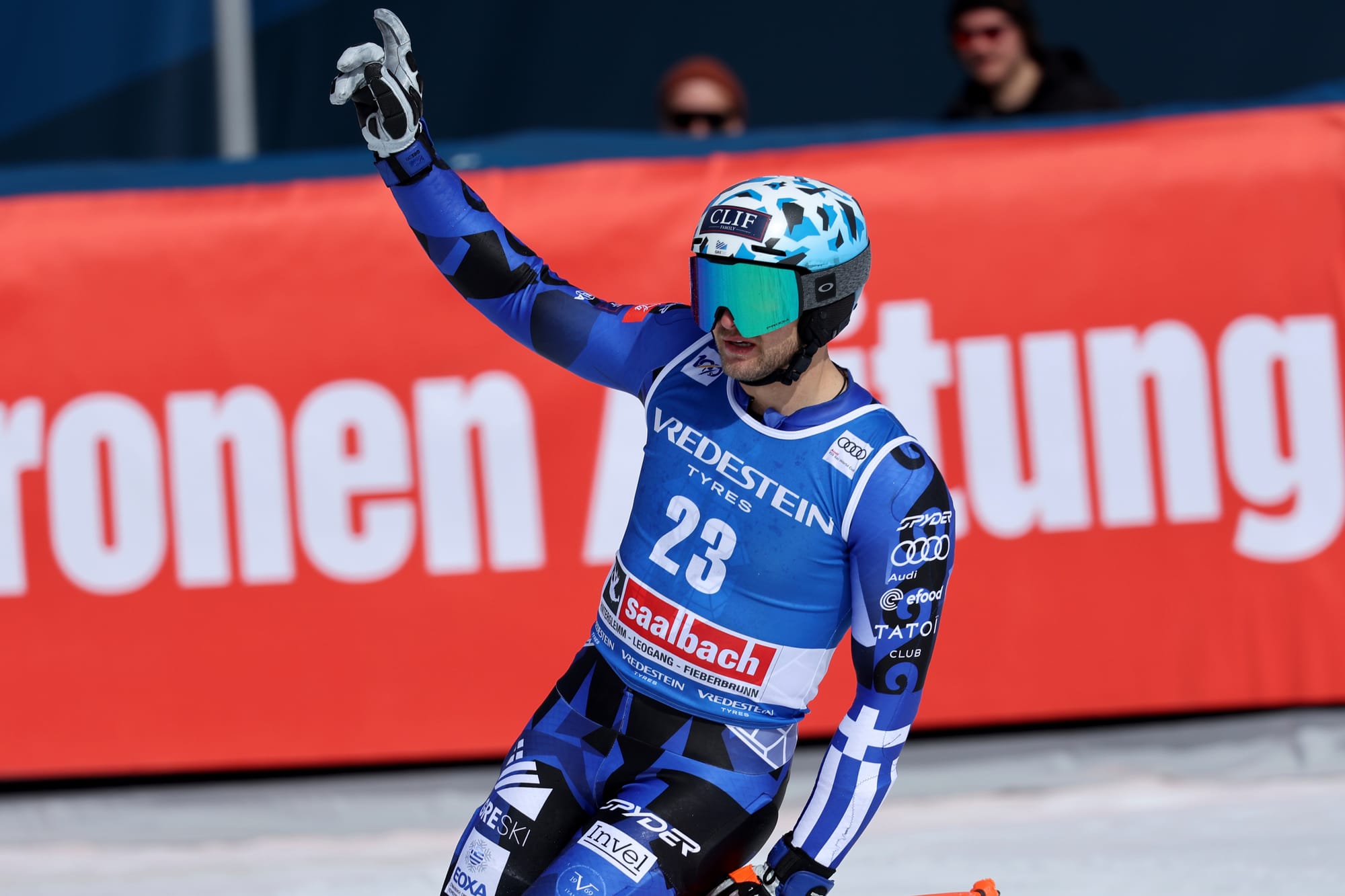
From Greece to Austria to the United States, AJ Ginnis nurtured his skill and desire. It's paying off. [AP photos]
“It was my buddy and a van, and we just hit the road,” Ginnis recalls. “We had no idea what the heck we were doing. But we learned along the way and built on our success.”
Success meant sleeping in the van during long road trips. Success meant booking ridiculous flights with long layovers to save $200. Success meant accepting other teams’ sympathies and joining them on their training days because you can’t just pull up to a ski resort and ask to practice. Success meant dissecting film while drinking beer and playing video games.
Ginnis thrived with his makeshift team. He hired another technician, Gaby Coulet. He allowed himself to be vulnerable and admit what he didn’t understand. There was no one-size-fits-all training plan like that of Team USA, where he felt like the slalom skiers were forced to fit into a box.
“I wanted to be different. We had to do it different because of our budget situation,” Ginnis says. “I needed my coaches to understand what I needed. And I never got that before in my career. But I got it with them. It was very a much a whatever-needs-to-get-done mentality.”
Ginnis is back in Greece today, ushering a new world as the new face of the Greek ski team. He’s the first Greek skier to claim World Cup points for his country. He later finished second in a World Cup race in France, becoming the first Greek skier to ever place on the podium. He later won a silver medal at the 2023 World Championships.

At 29, he’s showing no signs of slowing down. There’s still too much to accomplish. He wants to win a World Cup — a year-long, worldwide event that features the best skiers from each country. There’s sitting atop the podium at a World Championship. There’s the 2026 Olympic Games in Milano Cortina.
The fact he’s a Greek skier leading his country to prominence in the sport he loves isn’t lost on him. Greece may be a small country, but its citizens carry immense pride for their athletes. People will regularly stop him in the streets to say hi or snap a selfie. It’s all a bit surreal, but there’s beauty in that.